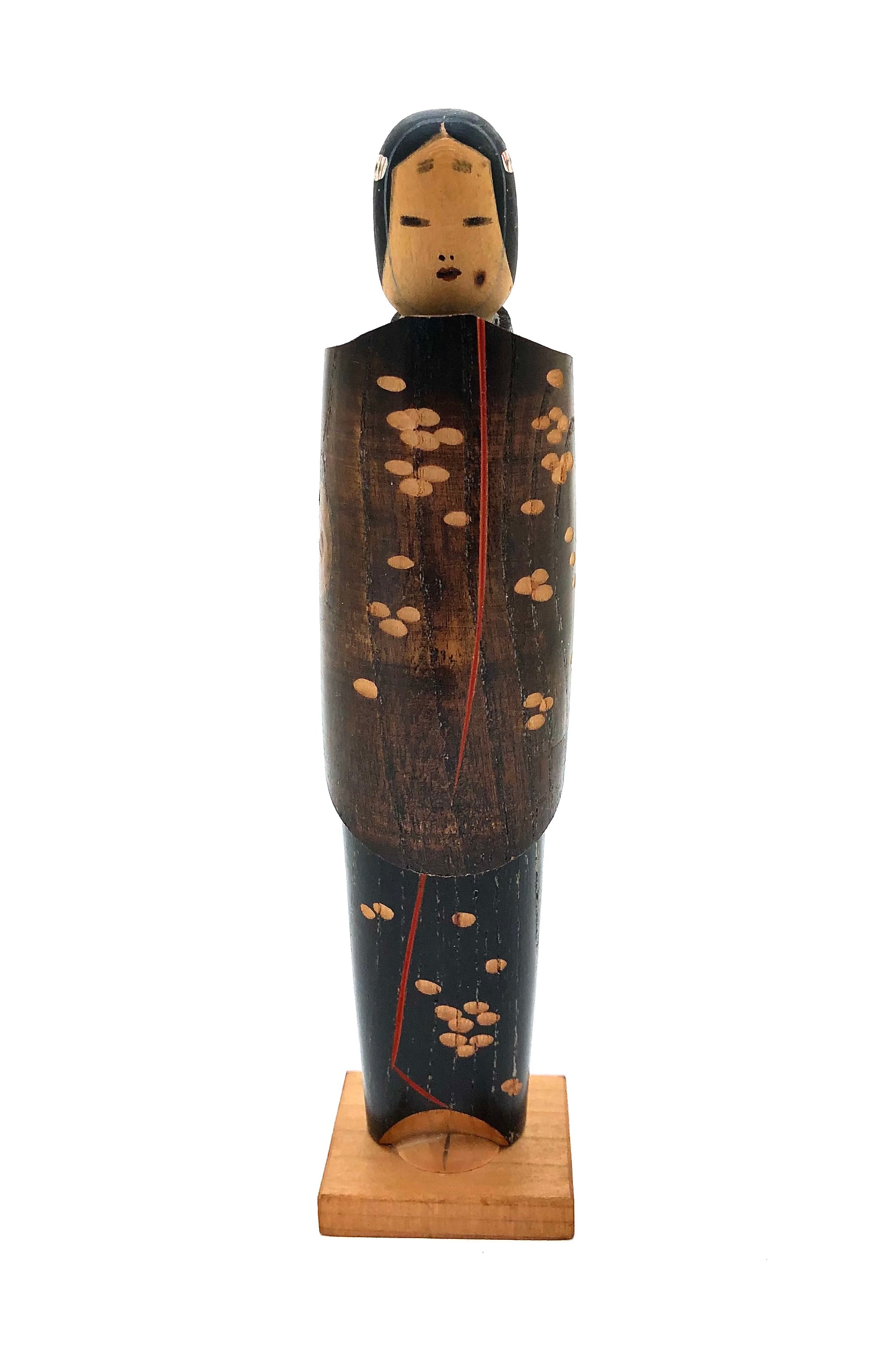
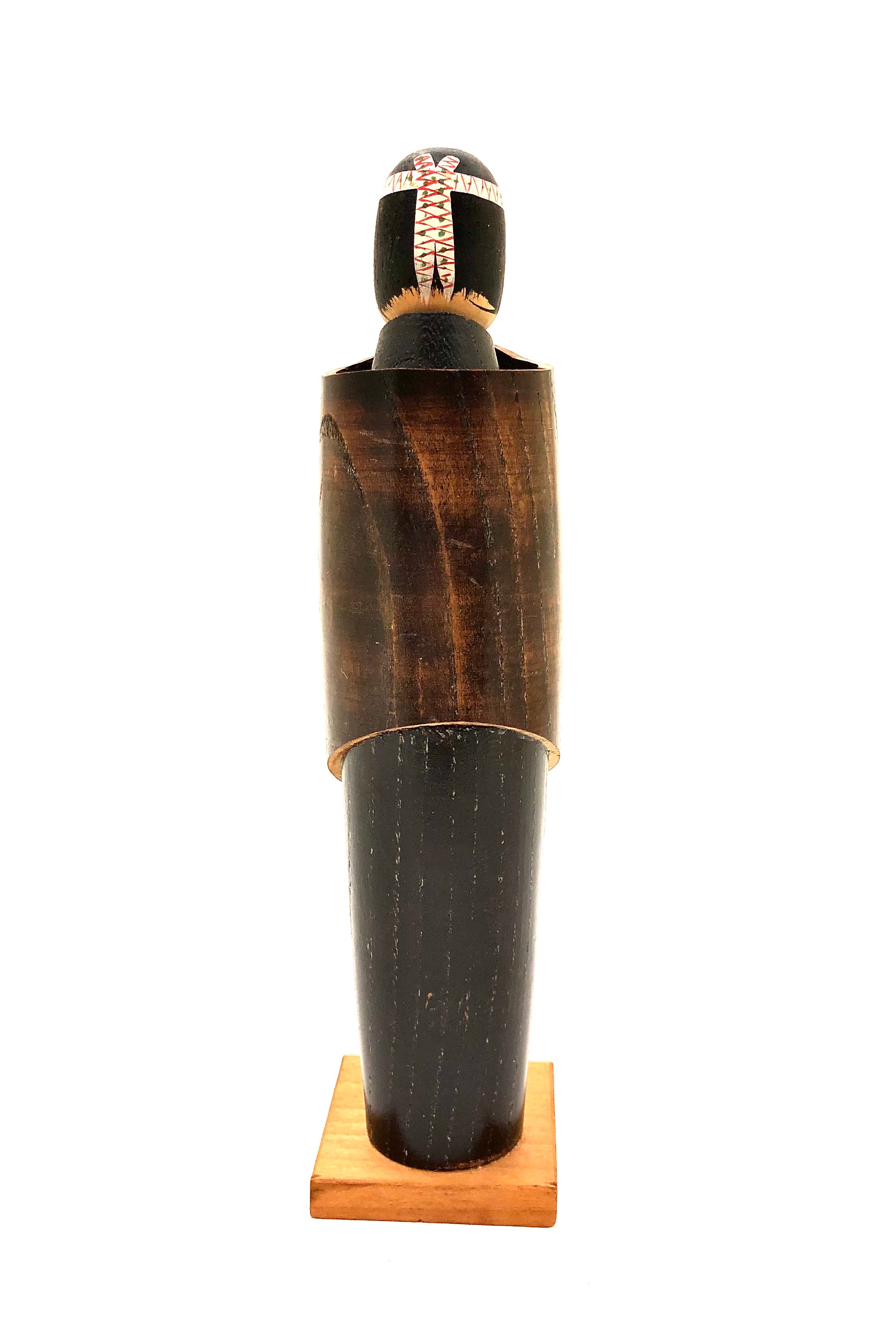
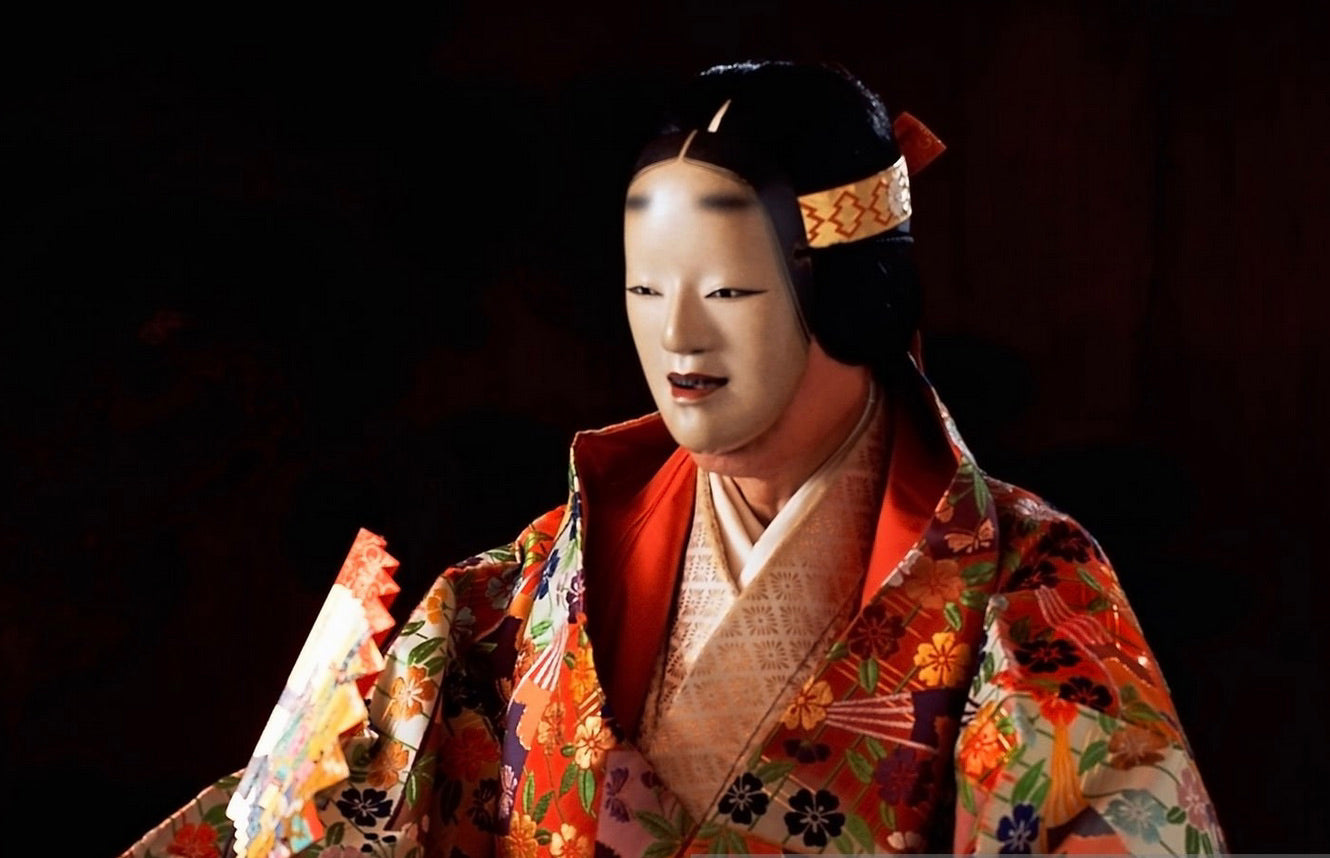
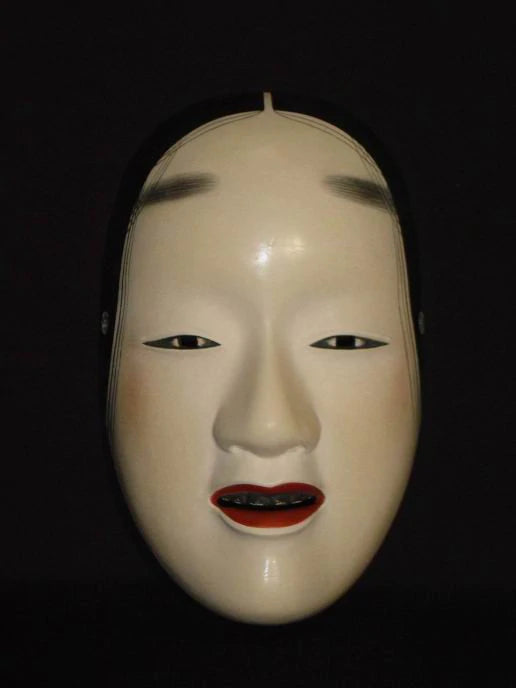
Vintage Sosaku Kokeshi ‘jo-no-mai Noh Dancer’ by Kon, Akira (Seiju) | 1931-
Dimensions: 7-3/4”h
This beautifully fashioned Kokeshi perfectly depict emotions conveyed by wonderfully stylized faces, gestures and simple treatment of garments depicting a ‘jo-no-mai Noh Dancer’, in a form of theatre involving music, dance and drama, originating in the 14th century and an interlude performance of the main Not performance. Here he captured the highly stylized masked actor at his commanding and mysterious best. An extremely slow-tempo dignified mai is a character who may represent on of the following characters: shirabyōshi (traveling female dancers wearing male attire), traditional female dancers, ghosts of noblewomen, female spirit or deity.
The head of the doll simulates the well known Noi mask, with expressive open slits for the eyes, hair design, and two ‘Bindi’ dots on the center of the forehead typically worn by this character. The garment has three-dimensional cherry blossoms on the surface with a red demarcation indicating the closure of the Kimono. Unusual for Kokeshi, the artist quite offen added tabi-covered feet to the piece, which one never sees on historically pure Kokeshi. Seiju-san employed different woods in its creation and particularly Japanese cypress, (Hinoki), and then stained with natural pigments to capture all the decorative elements of this character. The figure is mounted on a raised platform, (dias) to present and to protect the figure. The piece is unsigned but characteristically identified as one of the few pieces of this type made by Kon, Akira.
Seiju studied under Master Hasegawa, Tatsuo, and his designs are based on the Tsugaru-style kokeshi, where his pieces were sold at the Owani Spa, Aomori. Little is known about this artist, other than he is from the Yamagata area, a major Kokeshi-making city/prefecture. ‘Noh’ theatre, of course, along with ‘Kabuki’, is Japan’s great gift to the Western world. They originated at religious festivals in the first half of the fourteenth century.
Vintage Condition: Excellent, unrestored and completely intact and retains the original craft/workmanship. The piece meets all the standards of collectible Folk Art.
NOTE: “Mai” and “Dance” — Generally speaking the word, mau or mai is used to identify this figure/Kokeshi. It has the same translation, but the meaning is quite different. In fact the word buyō, also meaning dance, is a combination of the two characters mai and odori, but how really are the two words different, mai and odori. The word odori somehow relates to dancing in rhythm, jumping, and using your hands and feet to articulate. Mai on the other hand conjures images of sliding feet and “going around” and best describes the movement in Noh.
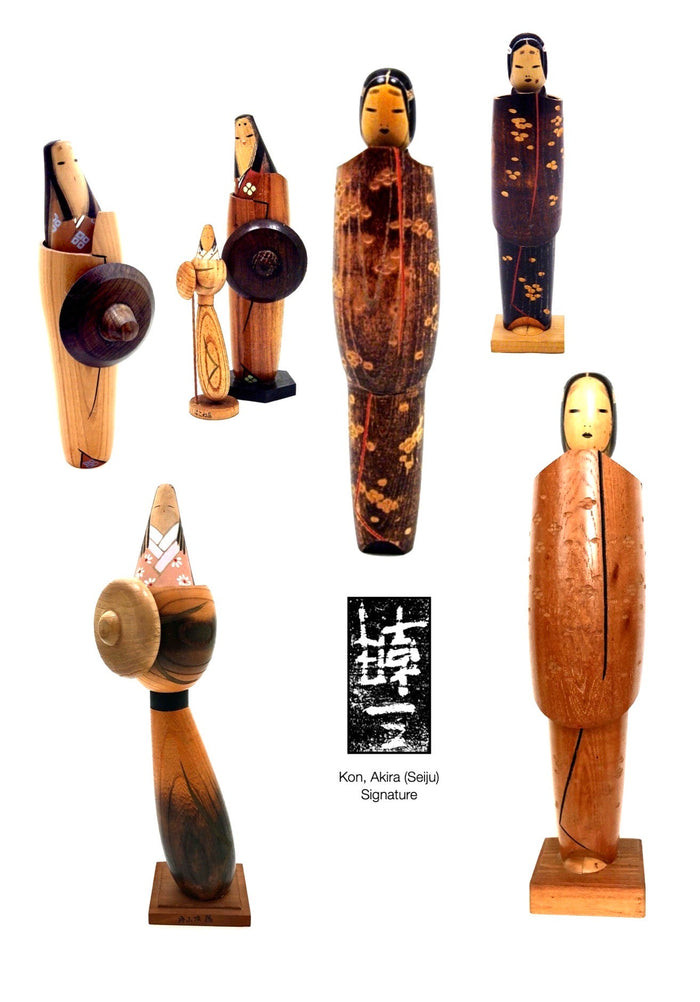
Artisan
Woodworker: Kon, Akira (Seiju)
1931-
Biographical History:
Seiju studied under Master Hasegawa, Tatsuo, and his designs are based on the Tsugaru-style kokeshi, where his pieces were sold at the Owani Spa, Aomori. Little is known about this artist, other than he is from the Yamagata area, a major Kokeshi-making city/prefecture. ‘Noh’ theatre, of course, along with Kabuki, is Japan’s great gift to the Western world which he honors in his creations and originated at religious festivals in the first half of the fourteenth century. Kon-san is famous for his depiction of a ‘Noh Dancer’ seen in three of the images, and he captured the highly stylized masked actor at his commanding and mysterious best.
Additionally shown are stylized versions of Heian noblewomen who represented families of high rank, and was one of his favorite subjects. Women enjoyed a certain aspect of freedom during this period and were well-educated in music, poetry, art, fashion, and calligraphy, which were a part of a woman's education during this time.
Collector's note – descriptive qualities, standard characteristics & ornamentation styles:
His figures perfectly depict emotions conveyed by wonderfully stylized faces, gestures, and classical garments. Kon-san’s Noh figures are elaborate, multi-layered works of art that convey a character's identity and enhance the performance. Unusual for Kokeshi and never seen on historically pure Kokeshi, but here the artist adds tabi-covered feet to the large piece which stands on a dais. He set the standard for this type of doll which several of his contemporaries copied. All of his noblewomen traveling in incognito, (Oshinobi Dochi), wore multi-layered garments, large overcoats if they wore outerwear, and carried a “Higonokami” knife in their sleeves for protection, and would wear large hats because of privacy concerns. He employed different woods, particularly Japanese cypress, (Hinoki), Pouloownia, and Cherry wood, and after detailing the doll gave pattern and depth to the garment. All of his dolls were stained with natural pigments.
Explore & Learn More about Woodworker: Kon, Akira (Seiju)